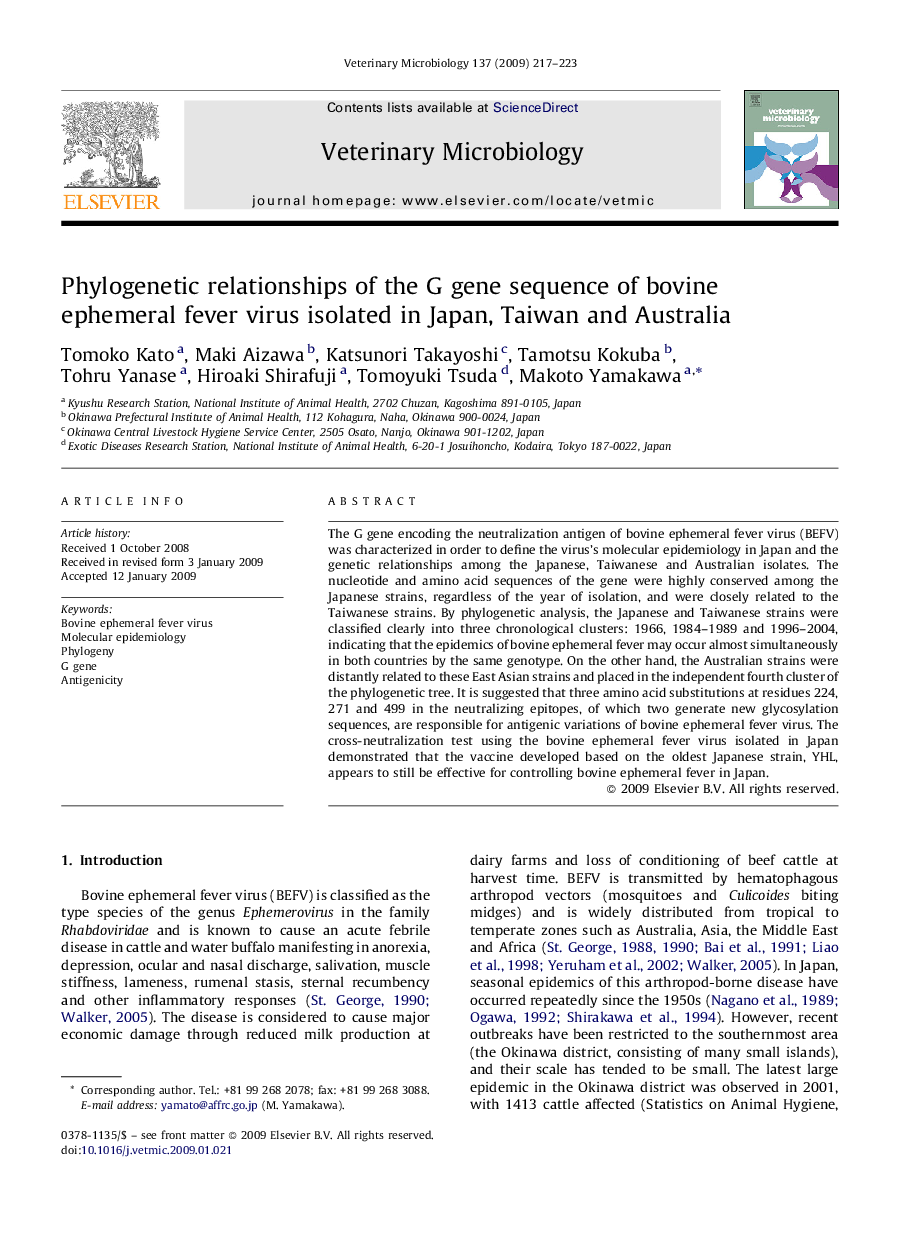| Article ID | Journal | Published Year | Pages | File Type |
|---|---|---|---|---|
| 2468282 | Veterinary Microbiology | 2009 | 7 Pages |
The G gene encoding the neutralization antigen of bovine ephemeral fever virus (BEFV) was characterized in order to define the virus's molecular epidemiology in Japan and the genetic relationships among the Japanese, Taiwanese and Australian isolates. The nucleotide and amino acid sequences of the gene were highly conserved among the Japanese strains, regardless of the year of isolation, and were closely related to the Taiwanese strains. By phylogenetic analysis, the Japanese and Taiwanese strains were classified clearly into three chronological clusters: 1966, 1984–1989 and 1996–2004, indicating that the epidemics of bovine ephemeral fever may occur almost simultaneously in both countries by the same genotype. On the other hand, the Australian strains were distantly related to these East Asian strains and placed in the independent fourth cluster of the phylogenetic tree. It is suggested that three amino acid substitutions at residues 224, 271 and 499 in the neutralizing epitopes, of which two generate new glycosylation sequences, are responsible for antigenic variations of bovine ephemeral fever virus. The cross-neutralization test using the bovine ephemeral fever virus isolated in Japan demonstrated that the vaccine developed based on the oldest Japanese strain, YHL, appears to still be effective for controlling bovine ephemeral fever in Japan.
